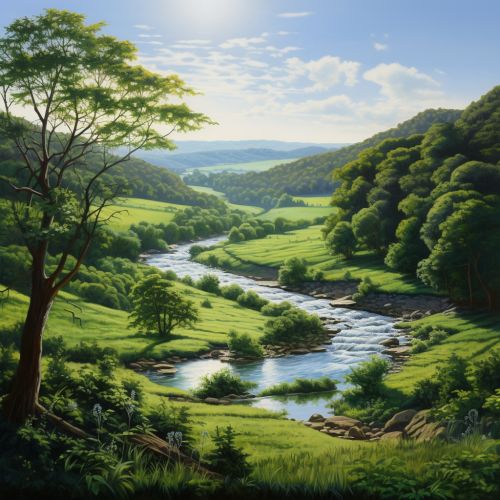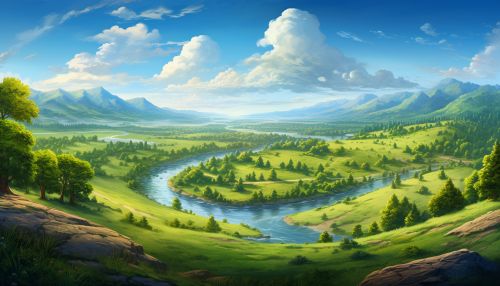Rivers
Introduction
Rivers are natural flowing watercourses, usually freshwater, flowing towards an ocean, sea, lake or another river. In some cases, a river flows into the ground and becomes dry at the end of its course without reaching another body of water. Small rivers can be referred to using names such as stream, creek, brook, rivulet, and rill. There are no official definitions for the generic term river as applied to geographic features, although in some countries or communities a stream is defined by its size. Many names for small rivers are specific to geographic location; examples are "run" in some parts of the United States, "burn" in Scotland and northeast England, and "beck" in northern England. Sometimes a river is defined as being larger than a creek, but not always: the language is vague.
Rivers are part of the hydrological cycle. Water generally collects in a river from precipitation through a drainage basin from surface runoff and other sources such as groundwater recharge, springs, and the release of stored water in natural ice and snowpacks (e.g., from glaciers).
Classification
Rivers can be classified in several ways. One system, used in the United States, ranks rivers in four classes: first through fourth-order, based on the number of tributaries. The Strahler Stream Order classifies rivers based on the connectivity and hierarchy of contributing tributaries. Primary tributaries are successively numbered, and tributaries of the same order are added together to make the next highest order, with the Mississippi River being the highest, a tenth order river. Another classification, used by the United States Environmental Protection Agency (EPA), breaks rivers into five primary classes: perennial, intermittent, ephemeral, discontinuous, and relict, based on the persistence of flow.


River Ecosystems
Rivers can create a remarkably rich ecosystem. These ecosystems are composed of four basic habitats: the river channel, the floodplain, the first- and second-order tributaries, and the surrounding watershed. Each of these habitats has its own physical and biological characteristics. The river channel is the conduit of water flow, while the floodplain, an area of flat land on either side of the channel, is subject to periodic flooding. The tributaries are the smaller streams that feed into the main river, and the watershed represents the overall area of land that drains into the river.
River Engineering
River engineering is the process of planned human intervention in the course, characteristics, or flow of a river with the intention of producing some defined benefit. People have intervened in the natural course and behaviour of rivers since before recorded history—to manage the water resources, to protect against flooding, or to make passage along or across rivers easier. River engineering has often resulted in unintended systemic consequences, some of which have caused other problems, and further engineering.
